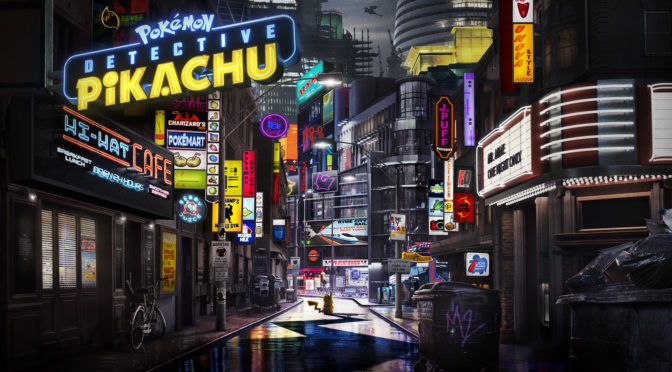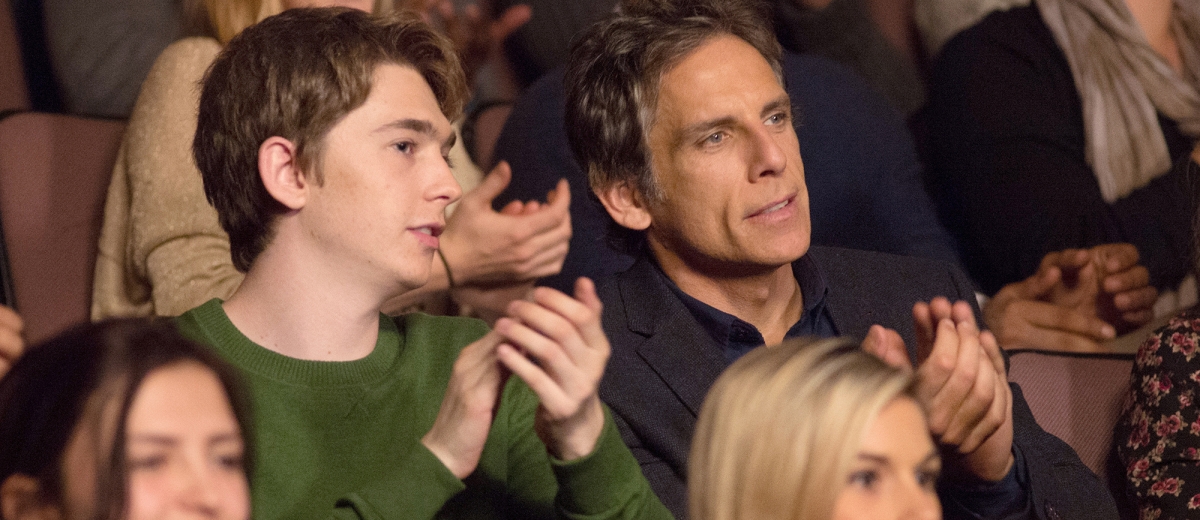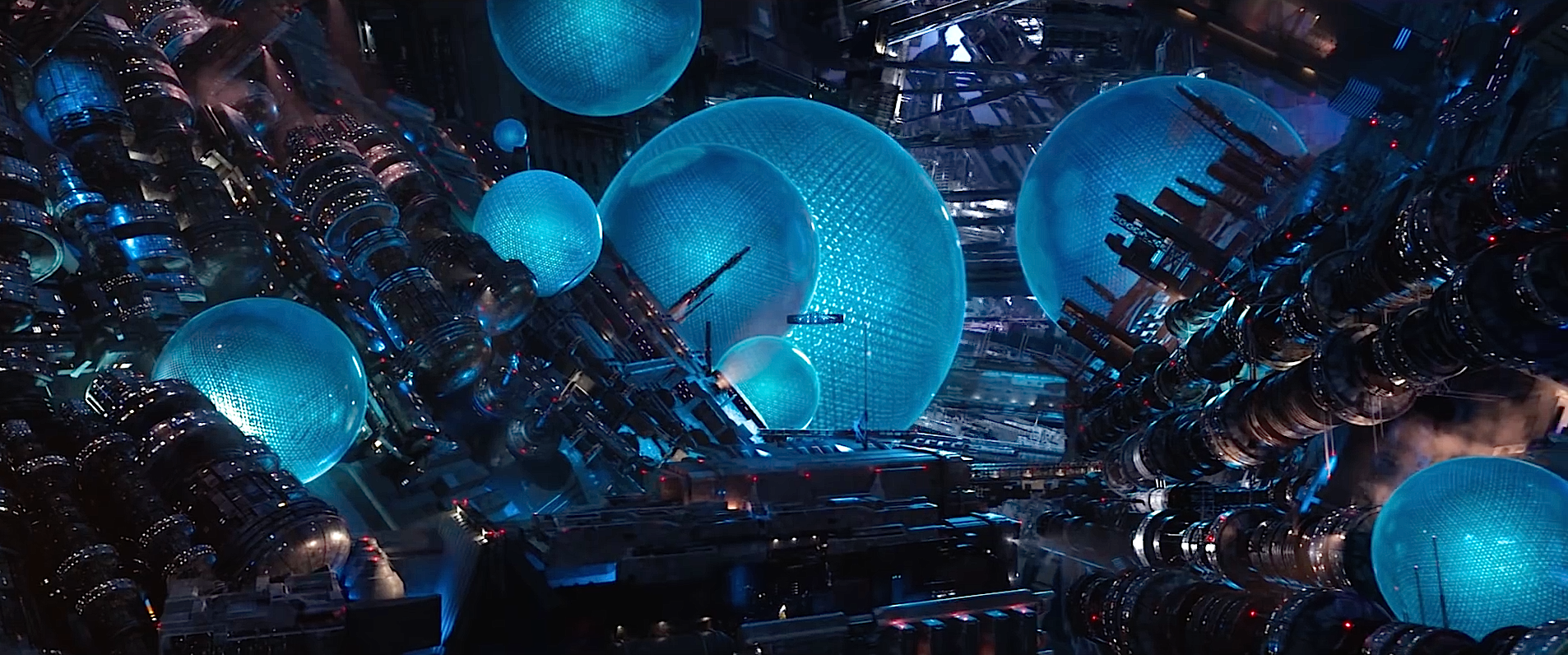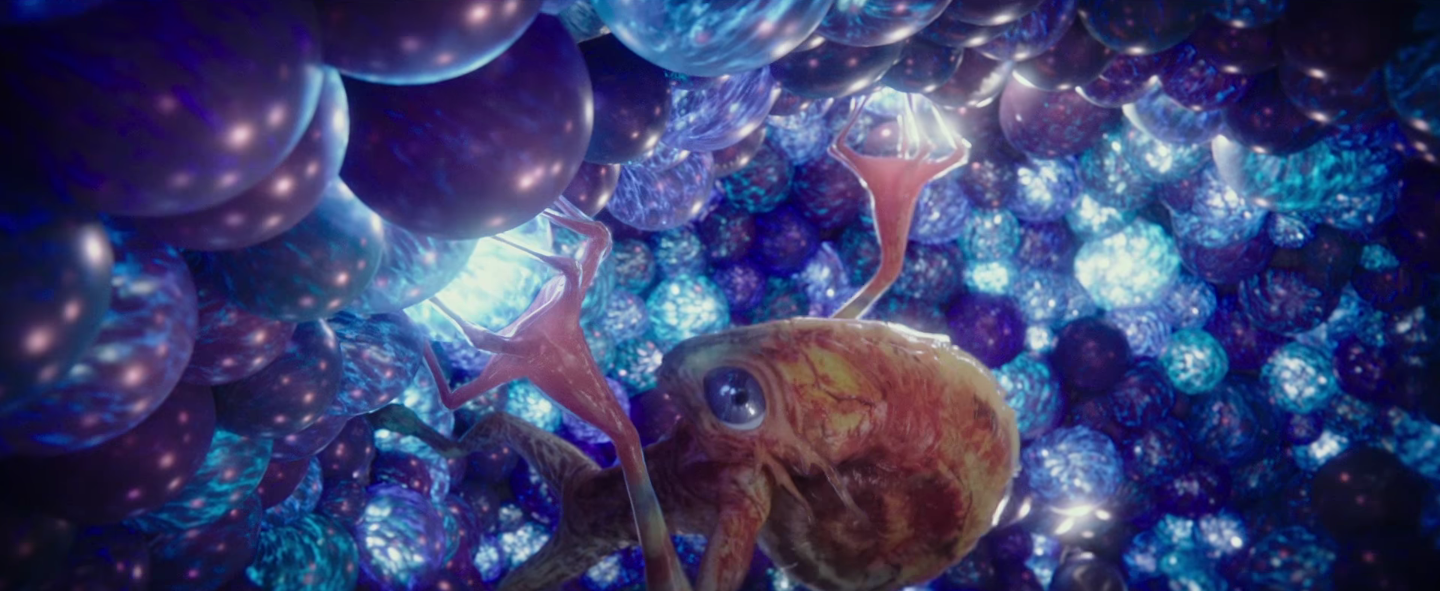The first live-action feature based on the mega-franchise Pokémon is also the best video game adaptation to date, not that it had a lot of competition. Tim (Justice Smith; Paper Towns) comes to Rime City to collect the belongings of his estranged father that recently passed away. In his father’s apartment, he finds a Pikachu (Ryan Reynolds; Deadpool) searching through documents and discovers that it can talk and that he can understand it. The Pikachu has lost its memory but wears a Sherlock Holmes-esque deerstalker hat with Tim’s father’s address written on the inside. He believes that there is a coverup and teams with Tim to solve the mystery.
For a series targeted at children, Rime City is an unexpected location. Unlike the mostly clean, often idyllic towns of the anime, Rime City is a bustling metropolis. It’s a grimy, overpopulated place closer to the city from Blade Runner than anything else. It’s a city with underground fighting rings , secret labs, and corruption. One key difference is that it does not have Pokémon trainers in the traditional sense. Normally, characters catch and train Pokémon in order to fight them in battles against other Pokémon to win tournaments. Rime City is noted as a city where there is “harmony between humans and Pokémon” so instead of owning several Pokémon, each human appears to have a single Pokémon partner. This is a clever decision by the writers because it allows the city to feel dangerous, but neatly sidesteps any potential resemblance between Pokémon battles and animal fights that could cause controversy due to the realistic renderings.
The creature designs are incredibly detailed. Bringing the cartoon animals to life was no small task and the effects team has done a phenomenal job of making them feel realistic. The Pokémon are rendered with texture which is alarming at first, but it acclimates quickly. Psyduck has fur that gets tussled, Bulbasaur has slimy frog-like skin, and even Pokémon that don’t resemble animals, like Mr. Mime, have slight wrinkles to them. It makes these strange creatures tangible, but without betraying their original, iconic designs, unlike the recent Sonic the Hedgehog movie.

With Pikachu, the effects team has taken this to another level. Pikachu is the only Pokémon in the film that talks and his animation is stellar. The way his fur moves and his fat jiggles as he runs is lifelike and they’ve taken special care in his facial animations. Using motion capture, Reynolds’s slightest expressions are mapped onto Pikachu’s face and it imbues him with Reynolds’s trademark sarcastic wit. He still sounds like Deadpool, but at no point in the film does he feel like a cartoon. Pikachu has all the charisma and physicality of a living, breathing character, while still being an adorable little furball.
The question then becomes “is this only for Pokémon fans?” and the answer is not quite. A tangential knowledge of a few main Pokémon like Pikachu is all that’s needed. The main plot resembles a standard film noir. Having watched the anime or played the games is beneficial but not necessary. The film mostly features the original 151 Pokémon so older fans that haven’t kept up with the franchise will be right at home. That being said, fans will gain so much more from the film. Most scenes contain references to Pokémon lore that knowledgeable viewers will eat up. Background elements like a Machamp using its four arms to redirect traffic around a sleeping Snorlax are amazing and it’s a joy to watch the believable way Pokémon interact and work with humans. The narrative itself is by no means special, but Reynolds’s performance as Pikachu and the thoughtful depiction of Pokémon-human interactions make this a worthy adaptation.

3/5 stars.






